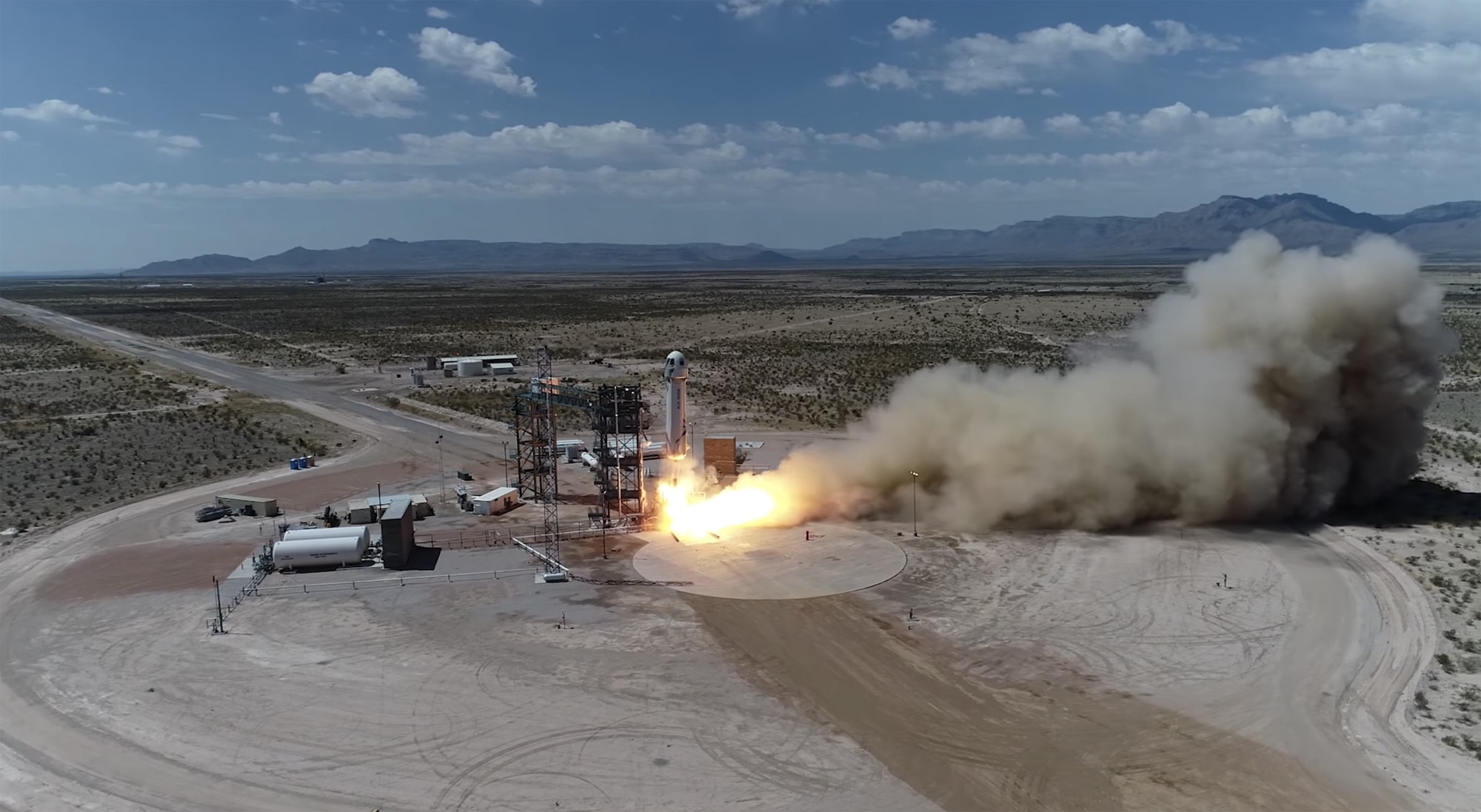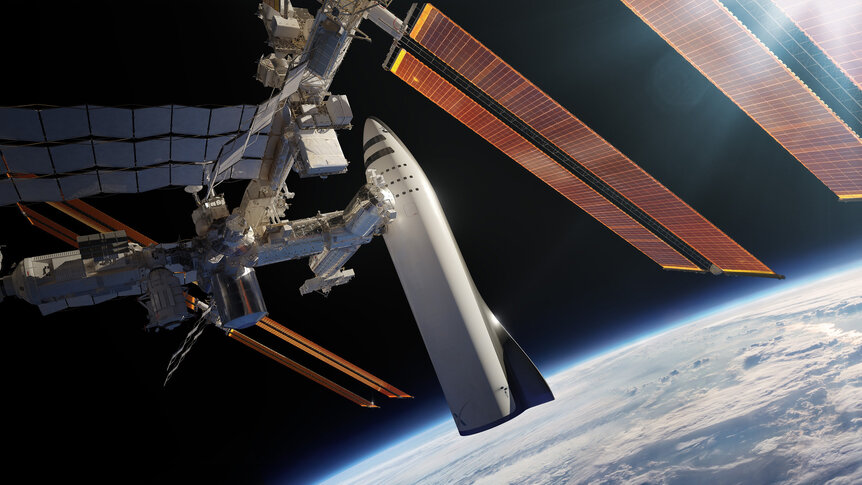Create a free profile to get unlimited access to exclusive videos, sweepstakes, and more!
Rocket News: Blue Origin, SpaceX, and the future of spaceflight

Some rocket news:
On April 29, 2018, the rocket company Blue Origin successfully flew a test mission of their New Shepard rocket. The suborbital flight — straight up and then back down — was the eighth flight of the New Shepard line, and the second flight of this particular rocket.
The test flight was uncrewed, and sent the capsule up to a height of just shy of 107 kilometers (100 km is the generally agreed-upon line that marks the beginning of “space”). The booster landed back to the West Texas launch site, and the capsule came down a few minutes later on three parachutes.
It was a pretty exciting launch! Here are the highlights.
Suborbital flights don't take nearly as much energy as orbital flights, but it's not like they're easy. Blue Origin plans on selling seats on these flights to people who want to experience about four minutes of microgravity, including scientists who can perform important experiments even in that short of a time period.
In the meantime, they're already building their next-generation New Glenn rocket that will be capable of achieving orbit. During the live webcast of the New Shepard launch, the announcer mentioned they hope to be launching crewed missions of the orbital rocket by the end of 2020! The first test flights of New Glenn are scheduled for 2019.
Which brings us to SpaceX. I heard some news recently that surprised me: SpaceX announced that it will not be using the Falcon Heavy rocket to send astronauts into space. Instead, they'll stick with the Falcon 9 for now, and work toward building their next-generation BFR (Big Falcon Rocket, if you believe that) for crewed missions.
I was surprised because the Heavy was the next big step for SpaceX, and it seemed logical to me that they would try to use it for crewed flight. At the moment, though, they're still working on getting their workhorse Falcon 9 rated for human use — and NASA, understandably, doesn't make that easy. Even when that's settled (and they expect to fly people into space on the F9 by the end of the year, though that may be an ambitious goal), they have decided to skip ahead to focus on the BFR for crewed flights.
Apparently, progress on that is going well enough that they're looking to replace all their existing hardware (the F9, the Heavy, and the Dragon capsule) with BFR in the 2020s. The BFR is expected to be able to lift an incredible 150 tons to low Earth orbit, and send astronauts to the Moon or even Mars.
It's natural to compare what Blue Origin plans versus SpaceX. The New Glenn will have a thrust at launch of about 17 megaNewtons (for comparison, the Saturn V had a launch thrust of 35 MN) — a second stage adds another MN, and an optional third stage 0.5 MN — and will be able to put 45 metric tons into low-Earth orbit.
The BFR will have about three times that much thrust at launch and take 150 metric tons to orbit. It will consist of a booster first stage and a spaceship second stage (which itself will have just under 13 MN of thrust). SpaceX has said it may begin testing of the spaceship part of the BFR in 2019. Their ultimate goal is to use it to send humans and equipment to the Moon and Mars.
Both New Glenn and BFR will be reusable.
Blue Origin has been pretty methodical with the steps they're taking. They are well into developing their new BE-4 engine, which is very powerful; United Launch Alliance has even contracted to use the BE-4 in their Vulcan rocket being developed now. SpaceX has made a lot of progress as well, though they do tend to set ambitious timelines that can slip. Still, in early April SpaceX revealed a photo of a huge mold that will be used to create the carbon fiber shell for the upper stage BFR spaceship. So they're moving along as well.
All of this is happening rapidly, so much so that keeping up is difficult. My advice is to keep an eye on what my colleague Eric Berger writes at Ars Technica, who reports on all this and is extremely knowledgeable on the latest news. Give him a follow on Twitter, too.
In the meantime, NASA is still developing the Space Launch System, or SLS, which I have always said and still think is a colossal waste of time, money, and effort. However, NASA is committed to it, so it's going to happen, at least in the short term. As Berger points out in a recent article, by the time the SLS really gets going in its final configuration (capable of launching 130 tons to orbit), the BFR and Blue Origin's next-next-generation New Armstrong (capable of sending payloads to the Moon) will likely have already superseded it.
So where is all this going? Beats me. The situation is fluid, and of course can change with a single launch failure or change in the wind for Congress. I like what both SpaceX and Blue Origin are trying to do, and given their progress so far, I'm inclined to think they can do it.















